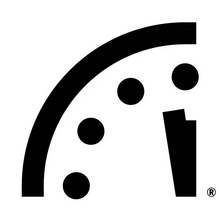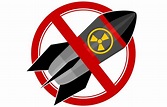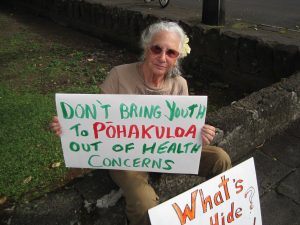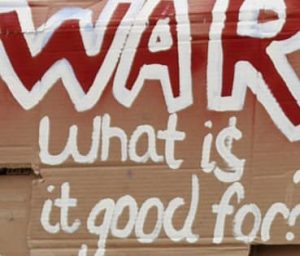The Legacy of Martin Luther King, Jr.
King’s Core Teachings on Nonviolence
and the Deeper Story Behind His Assassination
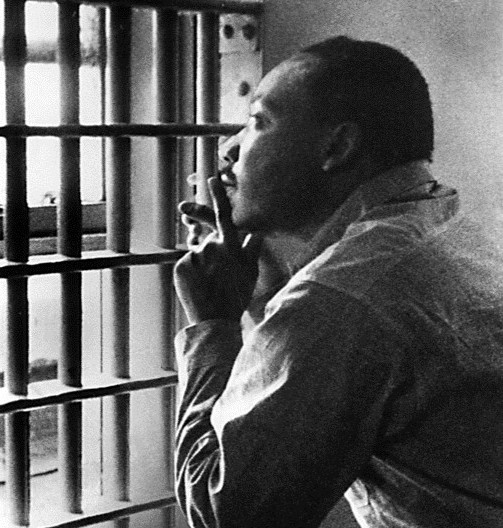
“The ultimate weakness of violence is that it is a descending spiral, begetting the very thing it seeks to destroy. Instead of diminishing evil, it multiplies it. Through violence you may murder the liar, but you cannot murder the lie, nor establish the truth. Through violence you murder the hater, but you do not murder hate. In fact, violence merely increases hate. Darkness cannot drive out darkness; only light can do that. Hate cannot drive out hate; only love can do that.”
— Martin Luther King Jr., quote from his 1967 book Where Do We Go From Here?
Dear WantToKnow.info readers,
In honor of MLK Day, we celebrate the legacy of Dr. Martin Luther King Jr. and his lasting memory and timeless teachings. From boldly shaping the U.S. civil rights movement to courageously giving voice to the devastating impacts of militarism and war, he served as a galvanizing moral force for transforming violence.
King spoke repeatedly about the Greek concept of agape, a social concept that sustained him throughout his career. Agape is a moral imperative defined by King as an “understanding, creative, redemptive good will for all men.”
We rise to the position of loving the person who does the evil deed while hating the deed he does … If I respond to hate with a reciprocal hate, I do nothing but intensify the cleavage in broken community. I can only close the gap in broken community by meeting hate with love … Agape is a willingness to go to any length to restore community. — Martin Luther King Jr.
King was one of the greatest disciples of Mohandas Gandhi, who emphasized the power of a nonviolent mass movement to awaken consciousness within activism. Building off of Gandhi’s teachings, King asserted that the means we use to influence others must be as pure as the ends we seek. We are all products of our violent society, until we do the courageous work of transforming the violence in our own lives to transform the violence in the world.
Gandhi and King believed that the nonviolent journey is one that affirms both our differences and fundamental unity with others. It is the process of becoming increasingly free from fear, transforming “us” vs. “them” in thought and action as we work for the well-being of all. King’s core teachings on nonviolence are explored below.
In our efforts to expose major cover-ups and corruption, we also explore eye-opening and important evidence revealing the deeper story behind the details of his assassination.
With faith in a transforming world,
Amber Yang for PEERS and WantToKnow.info
Stride Toward Freedom
King’s Principles of Nonviolence
In Stride Toward Freedom, King tells the classic story of the first successful large-scale application of nonviolent resistance in America: the Montgomery bus boycott. He described his book as “the chronicle of 50,000 Negroes who took to heart the principles of nonviolence, who learned to fight for their rights with the weapon of love, and who, in the process, acquired a new estimate of their own human worth.”
Below are powerful excerpts from the book detailing King’s six principles of nonviolent activism:
1. Nonviolence is a way of life for courageous people.
Nonviolent resistance is not a method for cowards; it does resist. If one uses this method because he is afraid or merely because he lacks the instruments of violence, he is not truly nonviolent. This is why Gandhi often said that if cowardice is the only alternative to violence, it is better to fight … The method is passive physically, but strongly active spiritually. He made this statement conscious of the fact that there is always another alternative: no individual or group need [to] use violence to right the wrong; there is the way of nonviolent resistance.
2. Seek to win friendship and understanding.
It does not seek to defeat or humiliate the opponent. The nonviolent resister must often express his protest through noncooperation or boycotts, but he realizes that these are not ends themselves; they are merely means to awaken a sense of moral shame in the opponent … The aftermath of nonviolence is the creation of the beloved community, while the aftermath of violence is tragic bitterness.
3. Defeat injustice, not people.
A third characteristic of this method is that the attack is directed against forces of evil rather than against persons who happen to be doing the evil … We are out to defeat injustice and not persons who may be unjust.
4. Suffering for a cause can educate and transform.
Nonviolent resistance is a willingness to accept suffering without retaliation. Unearned suffering is redemptive. Suffering, the nonviolent resister realizes, has tremendous educational and transforming possibilities. Suffering is infinitely more powerful than the law of the jungle for converting the opponent and opening his ears which are otherwise shut to the voice of reason. But beyond its effect upon the aggressor, the voluntary suffering inspires respect from the uncommitted and ultimately leads to a growth of, and solidarity with, the ranks of the peacemakers.
5. Avoid external physical violence, as well as internal violence of the spirit.
The nonviolent resister not only refuses to shoot his opponent but he also refuses to hate him. The nonviolent resister would content that in the struggle for human dignity, the oppressed people of the world must not succumb to the temptation of becoming bitter or indulging in hate campaigns. To retaliate in kind would do nothing but intensify the existence of hate in the universe. Along the way of life, someone must have sense enough and morality enough to cut off the chain of hate. This can only be done by projecting the ethic of love to the center of our lives.
6. The universe is on the side of justice.
The believer in nonviolence has deep faith in the future. This faith is another reason why the nonviolent resister can accept suffering without retaliation. For he knows that in his struggle for justice he has cosmic companionship… a creative force in this universe that works to bring the disconnected aspects of reality into a harmonious whole.
The arc of the moral universe is long, but it bends towards justice.
— Martin Luther King Jr.
Inquiring Deeper into King’s Assassination
Interview with King Family Lawyer William Pepper
Now, what kind of man was he? A man of enormous courage. No matter how much money it cost him … no matter how much his life became increasingly in danger, he stood firm on behalf of values, that he thought were essential human values. And he thought: to be silent in the face of this type of criminality, war criminality in particular, was in fact unconscionable. So, he was a man of enormous courage, depth, and integrity, and determined to have an impact on the structure of American democracy.
— William Pepper, personal friend to King and attorney for the King Family
Audiences of corporate media may not have heard of bestselling author and human rights lawyer Dr. William Pepper, and his decades of effort to expose the real story behind the assassination of King. In the years following his death, documents related to King’s murder case were destroyed, and all files of FBI surveillance on King were sealed for 50 years. The suppression of information prompted Pepper and the King family to file a civil action in Memphis against a man who admitted he was involved: Loyd Jowers, owner of a restaurant near where King was assassinated.
Vital information about the 1999 civil rights trial is extensively revealed in a powerful, 1 hour interview on The Project Censored Radio Show where Pepper sits down with Project Censored co-hosts Mickey Huff and Kenn Burrows to discuss his newly published volume, The Plot to Kill King: The Truth Behind the Assassination of Martin Luther King Jr.
Pepper’s investigation points to a conspiracy to silence King’s growing criticism of the Vietnam War and his anti-poverty campaign by then FBI director J. Edgar Hoover, elements within the military and intelligence agencies, the Memphis Police Department, and “Dixie Mafia” crime figures in Memphis, Tennessee.
Significant information on the trial is revealed below, as quoted by Pepper in the interview:
“The King v. Jowers civil trial… went on for 30 days with some 70 witnesses. It was not covered by the media. The media just stayed away. Because of the degree of media control in matters of this sort, very few people know that trial took place. But it did. And it took a jury 59 minutes to find that James Earl Ray had no involvement, knowing involvement, in the killing.”
“Well, they had determined that they were going to kill him because of the two issues we’ve just been discussing. The [Vietnam] War was a very important monetary issue for major American corporations. You know; at one point, John Downey, who was head of the military intelligence group, the 902nd Military Intelligence Group, used to brief [Lyndon] Johnson, President Johnson, on a very regular basis. And every time he would come back from Vietnam, he would brief him. And he would ask him: Why are we there? Why are we losing blood and treasure? What’s behind all of this? What is the reason for it? It doesn’t make any sense. And Johnson would ignore him for the most part. And, then, finally, one day, I guess he’d had too much or whatever, he pounded the table; and he said: John, I can’t get out of Vietnam. My friends are making too much money.”
“[King] was shot from the bushes in the back of the rooming house by a Memphis police department sharp shooter. He was hit in the face and went down and lost consciousness. He was, however, alive. He was taken to St. Joseph’s Hospital. He was in the emergency room. They were working on him in the emergency room. The chief of neurosurgery, a head neurosurgeon, a doctor named Breen Bland, who was also the family doctor for the Dixie Mafia family, the Adkins family, came in with two men in suits and told the people: ‘Stop working on that nigger. Get out and just let him die.’”
“The last one to leave the room was a surgical nurse. Her name was Shelby. And, as she was leaving, she heard them gathering spit up in their mouths like this. And that caught her attention. So, she turned around, looked over; and then she saw them spit on the body of Dr. King, saw Dr. Bland pull out the catheter, and take a pillow, put the pillow over his face and suffocate him.“
King Family Statement on the Assassination Trial
On behalf of the family of Martin Luther King, Jr, Martin Luther King III today issued the following statement on the U.S. Justice Department’s release of its report on their “limited investigation” of recent evidence regarding the assassination of Dr. King.
“We learned only hours before the Justice Department press conference that they were releasing the report of their results of their “limited investigation,” which covered only two areas of new evidence concerning the assassination of Dr. King. Given the recent verdict, we are able to state the following:
(1). We initially requested that a comprehensive investigation be conducted by a Truth and Reconciliation Commission, independent of the government, because we do not believe that, in such a politically-sensitive matter, the government is capable of investigating itself.
(2). The type of independent investigation we sought was denied by the federal government. But in our view, it was carried out, in a Memphis courtroom, during a month-long trial by a jury of 12 American citizens who had no interest other than ascertaining the truth. (Kings v.Jowers).
(3). After hearing and reviewing the extensive testimony and evidence, which had never before been tested under oath in a court of law, it took the Memphis jury only one hour to find that a conspiracy to kill Dr. King did exist. Most significantly, this conspiracy involved agents of the governments of the City of Memphis, the state of Tennessee and the United States of America. The overwhelming weight of the evidence also indicated that James Earl Ray was not the triggerman and, in fact, was an unknowing patsy.
(4.) We stand by that verdict and have no doubt that the truth about this terrible event has finally been revealed. We urge all interested Americans to read the complete transcript of the trial … and consider the evidence, so they can form their own unbiased conclusions.
Note: For a brief journey into the real story behind King’s murder, watch an informative, six minute video of the 1999 civil trial and how it was covered up by the media.

For more inspiration:
- See our awesome collection of inspiring resources in our Inspiration Center.
- Watch some of the most inspiring short video clips on the Internet.
- Read concise summaries of highly inspiring major media reports.
- Explore dynamic online courses which powerfully expand your horizons.
- Share the inspiration of Dr. Martin Luther King, Jr.’s quotes, videos, and more with your friends and bookmark this page on key social networking websites using the “Share” icon on this page.
See the treasure trove of resources in our Inspiration Center
Kindly support this work: Donate here
Explore the mind and heart expanding websites managed by the nonprofit PEERS network:
Subscribe here to one of the two popular PEERS email lists
